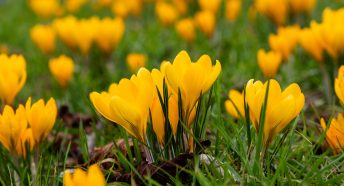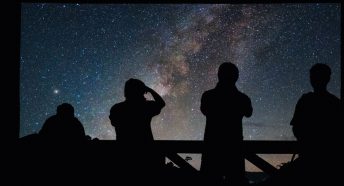February and March Dark Skies update 2022
Twenty twenty two is already shaping up to be a good year for astronomers with the amazing photographs coming back from the James Webb telescope.
The James Webb Space Telescope (JWT), if its slipped your mind, is an orbiting spacecraft in relatively deep space, designed to observe some of the oldest and most distant objects and events in the Universe, including the first stars and formation of the first galaxies. It is in truly dark skies. It has already successfully unfurled itself from its transit mode and is sending pictures back.
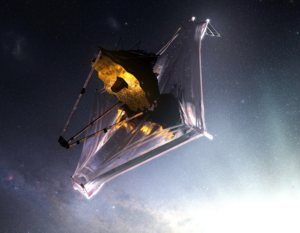
The “unfurled” James Webb telescope
The telescope is operating in a deep space to ensure it can collect high quality images. Because of it location it can collect images superior to that which we can collect on earth and from telescope such as Hubble.

The greater definition of JWT compared to Hubble is going to be a great help to astronomers.
Why is there a better image or sighting is space – making it simple, because its stable and dark conditions. Atmospheric temperature changes, pollution and most of all prevent us seeing the stars as they should be on earth. The best chances of seeing something is to go to one of our Dark Skies areas – out two National Parks – the North Yorkshire Moors and the Yorkshire Dales. We are coming up to our Dark Skies festival so there are many opportunities for Dark Skies experiences ibn February and early March.
Did you know our combined area of the North York Moors and Yorkshire Dales represents the largest protected area in the UK and one of the biggest in Europe? Now that’s got to be something to join in with and celebrate!
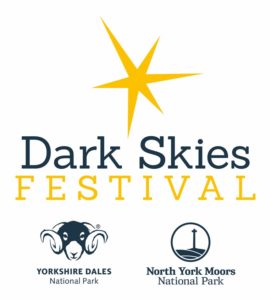
There are four designated Dark Sky Discovery Sites in the Yorkshire Dales National Park – at Hawes and Malham National Park Visitor Centres, Buckden National Park Car Park and Tan Hill Inn. These are locations that are defined as being open to the public, accessible to all abilities and provide parking and other facilities, and are a great place to begin. There will be activities at these sites throughout the dark Skies Season so check out the web sites below dependent on where you live or how far you wish to travel.
Just about anywhere will give dark skies on the North Yorkshire Moors but you could try Sutton Bank, Cropton and Dalby forests.
The Moors National Park Centre at Danby in the North York Moors will serve as a hub for many events including an evening with the Whitby & District Astronomical Society. The Inspired by… gallery at the Centre will also be hosting two exhibitions, starting with a preview event on the opening night of the Festival, where visitors can see how the fragility of the night sky is interpreted through the work of specially-commissioned artists, printmaker Helen Peyton and cosmic artist Louise Beer.
Families with younger children needn’t miss out on the fun as there are daytime dark skies-themed workshops at:
- Helmsley Arts Centre;
- a Van Gogh-inspired winter sky painting day at The Moors National Park Centre in Danby;
- an opportunity to learn more about nocturnal animals with the Yorkshire Wildlife Trust at the Dales Countryside Museum;
- and a chance to investigate the diet of owls at Sutton Bank.
- Kids can even get creative by making bat biscuits at the Fire Box Café near Hawes.
If you are out in the “Wilds”, make sure you well prepared, are warm, have a hot drink and food gloves and binos – enjoy the night sky – remember its still Winter!
There are a lot of amazing events happening at the North York Moors National Park and the Yorkshire Dales National Park.
An additional web site for activities
https://gostargazing.co.uk/regions/yorkshire-humber-england/
Don’t be disappointed, check the web sites and the weather, because if you have to travel to an event, you night be cloud gazing instead of star gazing!
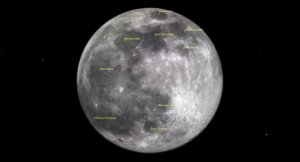
Dark Skies Festival (18 February – 6 March 2022)
What might you be seeing in February and March?
Tuesday, Feb. 15 — Blue Mare Tranquillitatis (all night)

The maria, Latin for “seas”, are the large, dark regions visible on the moon’s near side. They are basins excavated by major impactors early in the moon’s geologic history and later infilled with dark basaltic rock that upwelled from the interior of the moon. Several maria link together to form a curving chain across the northern half of the moon’s near-side. Mare Tranquillitatis, where man first walked upon the moon, is the large, round mare in the center of the chain. Sharp-eyes might detect that this mare is darker and bluer than the others, due to enrichment in the mineral titanium. (To help remember the lunar directions, the west side of the moon is illuminated at Last Quarter.)
The February full moon will occur on Wednesday, Feb. 16 at 16:56 GMT. The indigenous Anishnaabe (Ojibwe and Chippewa) people of the Great Lakes of the USA and Canada region call the February full moon Namebini-giizis “Sucker Fish Moon” or Mikwa-giizis, the “Bear Moon”. For them it signifies a time to discover how to see beyond reality and to communicate through energy rather than sound. The Algonquin call it Wapicuummilcum, the “Ice in River is Gone” moon. The Cree of North America call it Kisipisim, the “the Great Moon”, a time when the animals remain hidden away and traps are empty. For Europeans, it is known as the Snow Moon or Hunger Moon. Since it’s opposite the sun on this day of the lunar month, the moon is fully illuminated, and rises at sunset and sets at sunrise. When full, no shadows are cast by the lunar terrain — so all of the albedo variations are produced by the moon’s geology. February moons culminate very high in the night sky and cast shadows similar to summer midday sun.
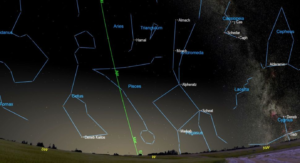
If you can make it to a Dark Skies area, you might be able to spot the Zodiacal Light, which will appear during the two weeks that precede the new moon on Wednesday, March 2. After the evening twilight has disappeared, you’ll have about half an hour to check the western sky for a broad wedge of faint light extending upwards from the horizon and cantered on the ecliptic. That glow is the zodiacal light — sunlight scattered from countless small particles of material that populate the plane of our solar system. Don’t confuse it with the brighter Milky Way, which extends upwards.
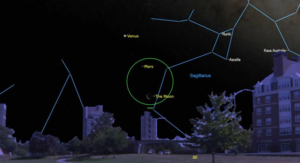
In the south eastern early sky on Sunday morning, Feb. 27, the old crescent moon will form a neat line with extremely bright Venus at the top and much fainter, reddish Mars in the centre.
How to take part in Star Count
Here are a few top tips for a brilliant Star Count evening:
- Try to pick a clear night for your count, with no haze or clouds, then wait until after 7pm so the sky is really dark.
- Looking south into the night sky, find the Orion constellation, with its four corners and ‘three-star belt’.
- Let your eyes adjust to the darkness for as long as possible (we recommend at least 20 minutes), then count the stars that you can see within the four corners of Orion (check out the picture below which shows you how)
- Make a note of the number of stars seen with the naked eye and submit your count on our website when the results page opens that week.
- Share your experiences (and any photos) with others on social media using #StarCount
- And don’t forget to check back to see the national results and how your area compares to the rest of the country!
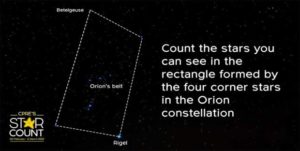
Maybe see you at Malham, Danby or Ribblehead in February or March!




